horn antenna
description: a type of antenna that consists of a flaring metal waveguide to direct radio waves
11 results

The Idea Factory: Bell Labs and the Great Age of American Innovation
by
Jon Gertner
Published 15 Mar 2012
The test route linked New York with Boston, via eight microwave towers, some built from concrete blocks and others from steel girders, most located on hillsides (or in some cases on tall urban buildings), topped by special horn-shaped antennas, vaguely resembling megaphones, which had been invented at Bell Labs largely under the direction of Harald Friis, the head of Bell Labs’ Holmdel, New Jersey, research office.22 Usually, two horn-shaped antennas on the towers would receive calls; a repeater apparatus inside the tower would amplify them; and then two other horn-shaped antennas, facing the opposite way, would instantly relay them to the next tower in the phone link. The height of these towers was crucial: Transmissions by microwaves traveled in straight lines and required a clear line of sight.
…
The Echo team, meanwhile, had also designed and requisitioned an immense horn antenna (the cost was about $128,000) resembling a kind of huge empty tobacco pipe, which would receive signals sent from the Jet Propulsion station in California as they bounced off the orbiting satellite.20 It was, in essence, a simple two-way conversation, but one made possible through an immensely complex electronic infrastructure on each edge of the continent. The horn antenna on Crawford Hill would be “steerable.” That is to say, it would be mounted on a circular track so that it could swivel according to the predicted path of the satellite. Near the base of the horn antenna, the Echo team would install the supercooled maser that would amplify the faint signals.
…
Much of the challenge in creating satellite communications lay not in the satellites themselves but in building an adequate system for transmitting and receiving signals from the ground, as well as a system for tracking the satellite as it moved across the sky. In this regard, a third existing technology appeared vital. It was the horn antenna, which had been designed by Bell Labs’ Harald Friis at the rural Holmdel lab in southern New Jersey. Horn antennas were already a crucial component in microwave towers across the country: They allowed for the reception of signals in a focused manner that greatly reduced surrounding noise and interference. There was no reason to think they couldn’t be adapted for satellite communications.
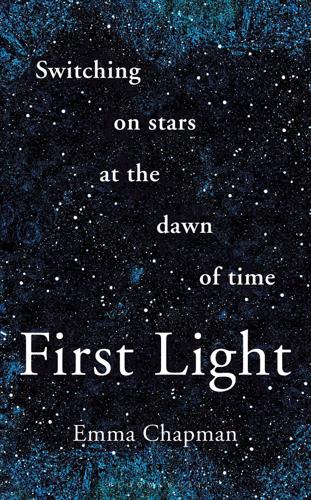
First Light: Switching on Stars at the Dawn of Time
by
Emma Chapman
Published 23 Feb 2021
At least one, Mary of Exeter, even has her own little tiny memorial.8 My point? Anywhere you look in history you can usually find a pigeon nearby. White dielectric material In 1964, American astronomers Robert Woodrow Wilson and Arno Allan Penzias were wondering what to do about the two pigeons nesting in their 6m (20ft) square horn antenna. The antenna at the Bell Telephone Laboratory in New Jersey had been built five years before as a communication conduit to satellites. They designed the strange sideways ice-cream cornet shape as a barrier to any signal emanating or bouncing off the ground, ensuring a clear communication channel with the satellite.
…
This means that we can purposefully bounce them off, targeting them at an antenna further around the Earth’s surface. That’s great for anyone listening to Radio 4 in the Scottish Highlands. It’s a disadvantage for astronomers, though, because the latest episode of The Archers ends up covering our desired astronomical signal. The restricted focus of the antenna on the sky made the Holmdel Horn Antenna an excellent device for taking astronomical observations of the sky, without ground-based interference. Penzias and Wilson had decided to co-opt the communications antenna as a radio telescope to build on Wilson’s PhD thesis, which theorised that there was a faint halo of gas around the Milky Way.
…
He hadn’t had the equipment able to measure such a faint background in the face of all the unhelpful terrestrial signals … until now. They made their measurements at a frequency of 1,420MHz because, if there was a halo of hydrogen, it would be sure to emit radiation at this wavelength. The previous users of the Holmdel Horn Antenna had left it set to receive a frequency of 4,080MHz. Coincidentally, the theorised Milky Way halo would be invisible at those frequencies. This was a serendipitous wavelength at which to null test their telescope: turn it on at a frequency where it is not expected to receive any signal and make sure the reading is zero to check the equipment.
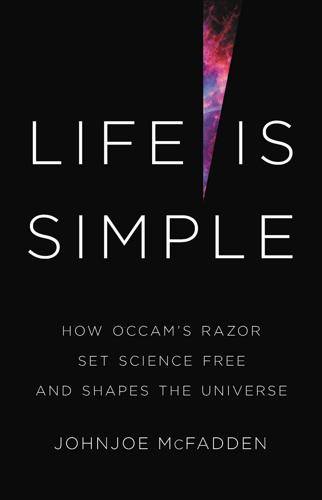
Life Is Simple: How Occam's Razor Set Science Free and Shapes the Universe
by
Johnjoe McFadden
Published 27 Sep 2021
A colleague of Penzias and Wilson attended one of these meetings and passed on news about the Princeton team’s efforts to the pair. Could the horn antenna’s persistent microwave hiss be the signal that Dicke was looking for? Penzias decided to give Robert Dicke a call. It came through when Dicke was having a ‘brown bag lunch’ meeting in his office at Princeton. His colleagues remember Dicke picking up the call and listening intently, occasionally repeating phrases such as ‘horn antenna’ or ‘excess noise’ and nodding. Finally, putting down the receiver, he turned to his group and said, ‘Well, boys, we’ve been scooped.’
…
The pair met at a conference only two years earlier. Penzias endlessly talkative, Wilson shy and tentative, hit it off. They joined forces at the world-famous Bell Laboratories to work on a project to map the stars with microwaves. Both stare at the sky. Both are baffled. FIGURE 1: Bell Telephone Laboratories’ horn antenna in Holmdel, New Jersey, with Arno Penzias and Robert Wilson. Microwaves, radiation with wavelengths anywhere between a millimetre and a metre, had been discovered nearly a century earlier and became a hot topic when Second World War military scientists attempted to harness them for radar, and tried to make rayguns capable of shooting down enemy missiles.
…
Dicke, working at the world-famous Massachusetts Institute of Technology (MIT), designed an efficient receiver capable of detecting microwaves. With both emitter and detector technology available, a new means of wireless communication was on the cards. In 1959, Bell Laboratories built the Holmdel horn antenna to detect microwaves bounced off satellites. However, interest waned and shifted to alternative wireless communication technologies so Bell took to lending out the antenna to scientists who could make good use of a giant microwave trumpet. Penzias and Wilson planned to map the sky. On 20 May 1964 they climbed into the control room, a kind of elevated garden shed connected to the rear end of the trumpet, and pointed the antenna at the sky.

Big Bang
by
Simon Singh
Published 1 Jan 2004
Echo had been squeezed into a 66-centimetre sphere for launching into orbit, but once in space it was inflated into a giant silver globe, 30 metres in diameter, which was capable of passively bouncing signals between an Earth-based transmitter and receiver. However, government intervention in this sector of the communications industry persuaded AT&T to withdraw from the Echo project for economic reasons, leaving the horn antenna free to be transformed into a radio telescope. The horn antenna was doubly suited for radio astronomy: it was largely shielded from local radio interference, and its size meant that it could locate the source of celestial radio signals with good accuracy. Penzias and Wilson got permission from Bell Labs to spend some of their time scanning the skies to study the various radio sources, but before they could do any serious surveying they first had to fully understand the radio telescope and all its quirks.
…
It was there that Wilson took a graduate course on cosmology given by Fred Hoyle, who had become a regular visitor to the California college following his 1953 collaboration with Willy Fowler. Just like Penzias, Wilson’s thesis focused on radio astronomy, and after its completion he too abandoned academia and headed for Bell Labs. Wilson was partly attracted to Bell Labs because of its 6-metre horn radio antenna sited at nearby Crawford Hill, shown in Figure 96. This was originally designed to detect signals from the innovative Echo balloon satellite, which had been launched in 1960. Echo had been squeezed into a 66-centimetre sphere for launching into orbit, but once in space it was inflated into a giant silver globe, 30 metres in diameter, which was capable of passively bouncing signals between an Earth-based transmitter and receiver.
…
Penzias and Wilson, however, were determined to conduct the most sensitive survey possible, so they immediately set about trying to locate the source of the noise and, if possible, reduce it or remove it completely. Figure 96 Robert Wilson (left) and Arno Penzias posing in front of Bell Laboratories’ horn antenna at Crawford Hill, New Jersey. This radio telescope is essentially a giant glorified radio receiver. Its aperture is 6 metres square and the monitoring equipment is housed in a hut at the apex of the cone. Noise sources can be broadly split into two types. First, there is extraneous noise, which is caused by some entity beyond the radio telescope, such as a major city on the horizon or some nearby electrical equipment.
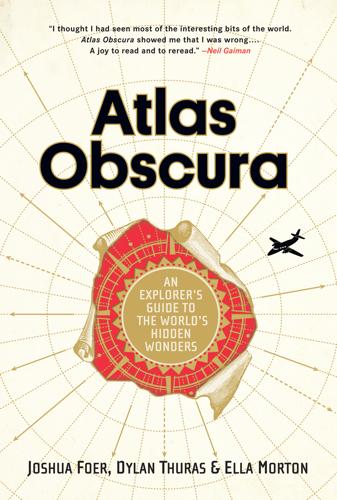
Atlas Obscura: An Explorer's Guide to the World's Hidden Wonders
by
Joshua Foer
,
Dylan Thuras
and
Ella Morton
Published 19 Sep 2016
The gory tableaus are still studied by detectives in training. 900 West Baltimore Street, Baltimore. 39.289109 76.632637 Tiny forensic dollhouses train detectives to solve crimes. NEW JERSEY Holmdel Horn Antenna HOLMDEL In 1965, Arno Penzias and Robert Wilson accidentally discovered one of the greatest secrets of the universe. The radio astronomers were using the Bell Labs horn antenna to scan for radio waves being bounced off NASA communications satellites. To Penzias’s and Wilson’s annoyance, an ever-present low hum interfered with their data collection. They checked their equipment, shooed away some pigeons that had been nesting in the antenna, and listened again.
…
The noise was not coming from the antenna, or anywhere in New Jersey, or anywhere on earth. It came from the universe itself. Penzias and Wilson had just stumbled upon cosmic microwave background. Penzias’s and Wilson’s discovery provided the first observational evidence that the universe began with a Big Bang. The discovery earned them a Nobel Prize in Physics. The decommissioned horn antenna they used for their explosive discovery is now a National Historic Landmark. Holmdel Road and Longview Drive, Holmdel. 40.390760 74.184652 Once the pigeons were shooed away, scientists were able to detect the faint echoes of the Big Bang. Northlandz FLEMINGTON Over 8 miles (13 km) of miniature train tracks run through this building, making it the largest model train layout in the world.
…
Peters, 20 Ruins of the MV Plassey, 14 Sacred City of Caral-Supe, 405 Santa Claus, 297 Sewell, 397 Spreepark, 45 Steetley Magnesite, 5 Steinart Hall, 372 Suakin, 194 Sunken City, 281 Umatilla Chemical Depot, 292 Uranium City, 264 Val-Jalbert Ghost Town, 274 Varosha Beach Resort, 51 White City Ruins, 281 see also Lost Cities and Towns SCIENCE MUSEUMS AND EXPERIMENTS Alchemy Museum, 78 American Computer Museum, 313 Birthplace of Tesla Museum and Memorial Center, 77 Boomeria, 287 California Science Center, 281 Centennial Bulb, 286 Dymaxion Chronofile, 279 Edison’s Last Breath, 328 Electronic Museum, 80 Ether Dome, 372 Gottfried Knoche’s Mummy Lab, 411 Griffith Observatory’s Tesla Coil, 281 Hessdalen AMS, 107 Holmdel Horn Antenna, 356 IceCube Research Station, 447 Instituto Butantan, 394 Integratron, 279 Mapimí Silent Zone, 417 Marconi National Historic Site, 268 Mark I, 372 Moore Lab of Zoology, 281 Musée des Arts et Métiers, 37 Nikola Tesla Museum, 94 Phone Booth on a Roof, 322 Pitch Drop Experiment, 232 Quiet Zone, 366 Reed College Research Reactor, 291 Sound Garden, 294 Wilhelm Reich Museum, 370 World’s Quietest Room, 329 SELF-BUILT CASTLES Bishop Castle, 298 Cano’s Castle, 299 Château Laroche, 333 Coral Castle, 299 Don Justo’s Self-Built Cathedral, 68 Moussa Castle, 120 Mystery Castle, 299 Palais Idéal, 38 Rubel Castle, 299 Solomon’s Castle, 299 Taródi Vár Castle, 80 Tower of Eben-Ezer, 30 STRANGE ARCHITECTURE Abita Mystery House, 346 Abuja Airplane House, 203 Amargosa Opera House and Hotel, 284–285 Arcosanti, 297 Arctic architecture, 262–263 Ateneo Grand Splendid, 383 Atomium, 30 Aurora Ice Museum, 377 Binoculars Building, 281 Blackfriars Playhouse, 351 Bob Baker Marionette Theater, 281 Bok Tower Gardens, 342 Boswell Embalming Bottle House, 260 Boulders of Monsanto, 66 Bridge to Nowhere, 243 Britannia Panopticon Music Hall, 20 Bruno Weber Skulpturenpark, 72 Carriolu Miniature Village, 40 Chan, 405 Chand Baori Stepwell, 132 Cigar Band House, 65 Clown Motel, 300 Concrete Parthenon, 351 Dans le Noir, 37 Discovery Hut, 447 Drottningholms Palace Theater, 110 Dunmore Pineapple, 20 Free Spirit Spheres, 259 Gbadolite, 207 Gold Pyramid House, 322 Greatstone Sound Mirrors, 8 Hobbiton, 240 House of Balls, 329 House of Evgeny Smolik, 92 House of Plastic Bottles, 386 House on the Rock, 334 Igloolik Research Station, 263 Infinite Corridor (MIThenge), 372 Karl Junker House, 45 Kowloon Walled City Park, 151 Kremsmunster Observatory, 25 Kruševo Makedonium, 83 Kyaiktiyo Balancing Pagoda, 177 Loretto Chapel Stairs, 305 Lumilinna Snow Castle, 102 Magic Mountain Hotel, 397 Maison Picassiette, 33 McElroy Octagon House, 287 Mini Taj Mahal, 128 Minimundus, 25 Mistake House, 321 La Mona, 418 Moonhole, 442 Mudhif Houses, 116 Nakasuk School, 263 Naucalpan, 417 New Lucky Restaurant, 132 Newgrange Mound, 15 Nördlingen, 41 Painted Village, 85 Palacio Barolo, 385 Paper House, 373 Passetto di Borgo, 58 Ponte City Apartments, 216 Pope Leo’s Bathroom, 57 President’s Room, 118 Quinta da Regaliera, 67 Radio City Music Hall’s Secret Apartment, 359 Rundetårn, 100 Ryugyong Hotel, 164–165 Salar de Uyuni, 388 Sam Kee Building, 258 Santa’s Workshop, 104 727 Fuselage Home, 421 Shackleton’s Hut, 449 Skellig Michael, 15 Solar Power Towers, 70 Solomon’s Castle, 299 Stiltsville, 340 Swallow’s Nest, 98 Tash Rabat, 137 Teatro Amazonas, 395 Tower of Eben-Ezer, 30 Trick Fountains of Hellbrunn Palace, 28 Upside-Down House, 83 Venetian Palace Diorama, 372 Watts Tower, 281 Wilson’s Stone Igloo, 447 Winchester Mystery House, 279 Wishbones of McSorley’s Old Ale House, 359 Wuppertal Suspension Railway, 46 see also Pyramids; Self-built Castles, Towers, and Homes STRANGE FLORA AND FAUNA Abu Dhabi Falcon Hospital, 123 Adak National Forest, 378 African Dream Root, 393 Archie the Giant Squid, 12–13 blue-ringed octopus, 228 box jellyfish, 228 Chocolate Hills, 178 coastal taipan, 229 Cochrane Polar Bear Habitat, 273 Colossal Squid, 244 Dzanga Bai, 206 eye worm, 154 Firefly Squid of Toyama Bay, 156–157 Franklin Park Zoo Bear Pens, 372 Grant Museum of Zoology, 10 Guinea worms, 154 gympie gympie, 229 hemlock, 4 Huachuma, 392 Huberta the Hippo, 216 Iboga, 393 Impaled Stork, 47 Jellyfish Lake, 248 Jigokudani Park, 160 Knight’s Spider Web Farm, 375 lake monsters, 368–369 Litchfield Termite Mounds, 234 loa loa, 154 Maasai Ostrich Farm, 210 Manú National Park, 405 Monarch Butterfly Biosphere Reserve, 417 Musk Ox Farm, 377 Narcisse Snake Orgy, 261 Pablo Escobar’s Hippos, 399 Pangolin Rehabilitation Center, 169 Pitcher Plants of Kinabalu, 176 Rat King, 38 Sacred Crocodile Pond, 199 Salvia divinorum, 392 Seneca White Deer, 360 Skunk Ape Research Headquarters, 341 Sloth Sanctuary, 422 Socotra Island, 124 stonefish, 228 Swimming Pigs, 426 Sydney funnel-web spider, 229 Synchronized Fireflies of Kampung Kuantan, 176 tapeworms, 154 Thousand-Year Rose, 44 Three-Century Labyrinth, 65 Tortoises of Aldabra, 222 Ueno Zoo Escaped Animal Drill, 155 University of Florida Bat Houses, 340 Vallée de Mai, 221 Victoria Amazonica, 395 Wallabies of Lambay, 17 Wichita Mountains Buffalo Herd, 317 Zoological Museum at Vietnam National University, 184 Zoological Museum (Bologna), 52 Zoological Museum (Cluj-Napoca), 86 see also Trees STRANGE TOWNS AND CITIES Auroville, 132 Castellfollit de la Roca, 70 Ciudad Mitad del Mundo, 402 Colonia Tovar, 410 Darra Adam Khel, 140 Dwarf Empire, 146 Fordlândia, 395 Fucking, Austria, 25 Ganvie, 196 Garbage City, 188 Giethoorn, 64 Hallstatt, 150 Kampong Ayer, 168 Kijong-dong, 163 Kingdom of Women, 146 Nova Cidade de Kilamba, 213 Oyotunji African Village, 350 PhinDeli Town, 318 Setenil de las Bodegas, 70 Villa Baviera, 397 Vulcan, 257 Walled City of Shibam, 124 Whittier, Alaska, 377 SUPERNATURAL Badlands Guardian, 258 Betty and Barney Hill Archive, 374 Cassadaga, 342 Child-Eater of Bern, 73 Devil’s Footprint, 41 Devils’ Museum, 83 Devil’s Tramping Ground, 348 Fairy Circles, 215 Gurdon Light, 339 Hook & Ladder 8, 359 International Cryptozoology Museum, 367 Lily Dale Assembly, 360 Marree Man, 234 Mary King’s Close, 20 Mumtaz Begum, 140 Musée de la Magic, 37 Museo de las Brujas, 70 Museum of Witchcraft and Magic, 7 Oregon Vortex, 289 Robert the Doll, 342 TAXIDERMY Agriculture Museum of Budapest, 81 August von Spiess Museum of Hunting, 87 Deyrolle Taxidermy, 34 Grip the Raven, 364 TEMPLES, CHURCHES, AND MONASTERIES Angelus Temple, 281 Astronomical Clock of Besançon Cathedral, 33 Beer Bottle Temple, 183 Cao Dai Holy See, 184 Cathedral of Junk, 308 Cathedral of Our Lady of the Angels, 281 Chained Books of Hereford Cathedral, 5 Chapel Oak, 33 Chapel of the Snows, 447 Chicago Temple, 320 Church of St.

Collider
by
Paul Halpern
Published 3 Aug 2009
Rather than starting again, He crafted an alternative solution: “And God said: ‘Let there be Hoyle’ . . . and told him to make heavy elements in any way he pleased.”3 Despite its failure to explain synthesis of higher elements, the Big Bang theory has proven a monumentally successful description of the genesis of the universe. A critical confirmation of the theory came in 1965 when Arno Penzias and Robert W. Wilson pointed a horn antenna into space and discovered a constant radio hiss in all directions with a temperature of around three degrees above absolute zero (the lower limit of temperature). After learning of these results, Princeton physicist Robert Dicke demonstrated that its distribution and temperature were consistent with expectations for a hot early universe expanding and cooling down over time.
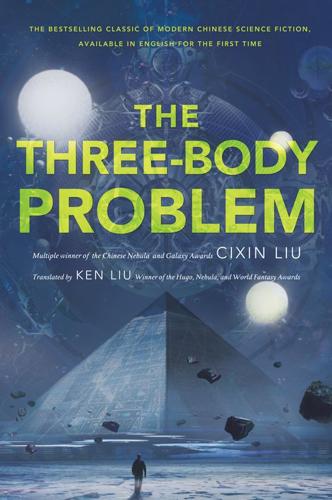
The Three-Body Problem (Remembrance of Earth's Past)
by
Cixin Liu
Published 11 Nov 2014
The wavelength of the cosmic microwave background is seven centimeters. That’s five orders of magnitude longer than the wavelength of visible light. How can we possibly see it?” “Using 3K glasses.” “Three-K glasses?” “It’s a sort of science toy we made for the Capital Planetarium. With our current level of technology, we could take the six-meter horn antenna used by Penzias and Wilson almost half a century ago to discover the cosmic microwave background and miniaturize it to the size of a pair of glasses. Then we added a converter in the glasses to compress the detected radiation by five orders of magnitude so that seven-centimeter waves are turned into visible red light.
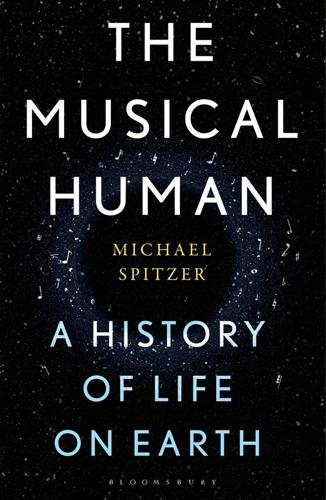
The Musical Human: A History of Life on Earth
by
Michael Spitzer
Published 31 Mar 2021
., p. 312. 67Nussbaum, Musical Representation, pp. 268–9. 68John Pfeiffer, The Creative Explosion: An Inquiry into the Origins of Art and Religion (New York: Harper and Row, 1982), p. 291. 69Kenneth Smith, ‘Vertigo’s Musical Gaze: Neo-Riemannian Symmetries and Spirals’, Music Analysis 37/1 (2018), pp. 68–102. 70Nussbaum, Musical Representation, p. 284. 71Ian Mabbett, ‘Buddhism and Music’, Asian Music 25/1–2 (1993), pp. 9–28. Chapter 5 1Penzias and Wilson were using a twenty-foot horn antenna that had originally been designed to detect radio waves bouncing off Echo balloon satellites. ‘How Two Pigeons Helped Scientists Confirm the Big Bang Theory’, https://www.smithsonianmag.com/smithsonian-institution/how-scientists-confirmed-big-bang-theory-owe-it-all-to-a-pigeon-trap- 180949741/#cfztISWRHSwoPhRQ.99 2‘Asteroseismology: using the natural music of the stars’, https://www.birmingham.ac.uk/accessibility/transcripts/Professor-Bill-Chaplin-Asteroseismology.aspx 3Trevor Wishart, ‘From sound morphing to the synthesis of starlight’, Musica/Tenologia (2013), pp. 65–9. 4Jon Solomon, Ptolemy Harmonics: Translation and Commentary (Leiden: Brill, 2000), pp. 152–55. 5Siglind Bruhn, The Musical Order of the World: Kepler, Hesse, Hindemith (Hillside, New York: Pendragon, 2005), p. 141. 6Derya Özcan, The Woman Who Owned the Shadows (Selçuk University Press: Konya, 2011), p. 11. 7Patricia Monaghan, The Goddess Path: Myths, Invocations & Rituals (St.
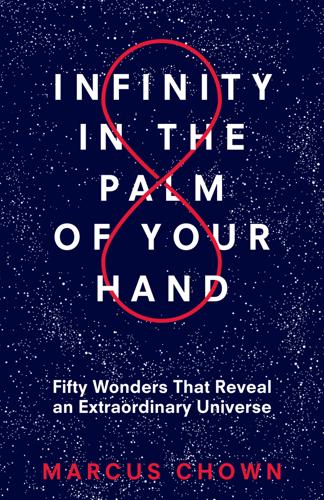
Infinity in the Palm of Your Hand: Fifty Wonders That Reveal an Extraordinary Universe
by
Marcus Chown
Published 22 Apr 2019
However, in the 1960s, astronomers discovered quasars, the super-bright cores of newborn galaxies.1 Their light had taken many billions of years to travel across space to the earth and so was showing them they were in the early universe. Since there are no quasars in existence today, it was obvious that the universe has changed, or evolved, flatly contradicting the steady state theory. But the killer blow to the steady state theory came in 1965. At Holmdel in New Jersey, two astronomers were using a giant horn-shaped radio antenna.2 It had been built at Bell Labs, part of the AT&T phone company, to transmit and receive microwave signals from the first experimental communication satellites. Arno Penzias and Robert Wilson aimed to use it to detect the faint radio-glow of ultra-cold hydrogen gas, which they believed was surrounding our Milky Way.
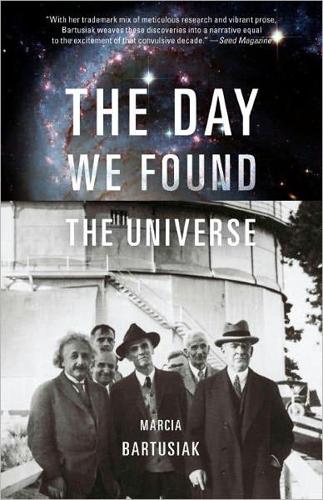
Day We Found the Universe
by
Marcia Bartusiak
Published 6 Apr 2009
The Royal Astronomical Society presented its highest award, the Gold Medal, to him in 1933, with its president, Frederick Stratton, amusingly announcing that “if cosmogonists to-day have to deal with a Universe that is expanding in fact as well as in fancy, at a rate which offers them special difficulties, a great part of the initial blame must be borne by our medallist.” In many ways, Slipher's accomplishment resembled that of Arno Penzias and Robert Wilson several decades later. In 1964 the two Bell Laboratory researchers were calibrating a massive horn-shaped antenna in New Jersey in preparation for some radio astronomy observations and registered an unexpected cosmic radio noise wherever they looked on the sky, spending months trying to discover its source. Just as Slipher revealed a remarkable phenomenon that took others time to fully interpret, so too did Penzias and Wilson need fellow astronomers to tell them what they had found, that they had been listening to the faint reverberation of the Big Bang all along.

Voyage
by
Stephen Baxter
Published 23 May 2011
The sensor pallet on its rearview-mirror extensor arm was a collection of fat, awkward-looking tubes and antennae and lenses, all wrapped in foil. There was a TV camera to study the clouds, an airglow experiment to look for ultraviolet echoes of carbon, oxygen, and hydrogen, an infrared radiometer studying cloud temperatures, a magnetometer, charged-particle telescopes. Four horn-shaped radar antennae would be able to penetrate the cloud layer and map the strip of Venus over which Ares passed. The sensors were already working, peering forward from the rearview mirror, the pallet which angled out from the Mission Module’s pressure hull. “Hey,” Gershon said. “Here goes the probe. I’m passing through the ionosphere.